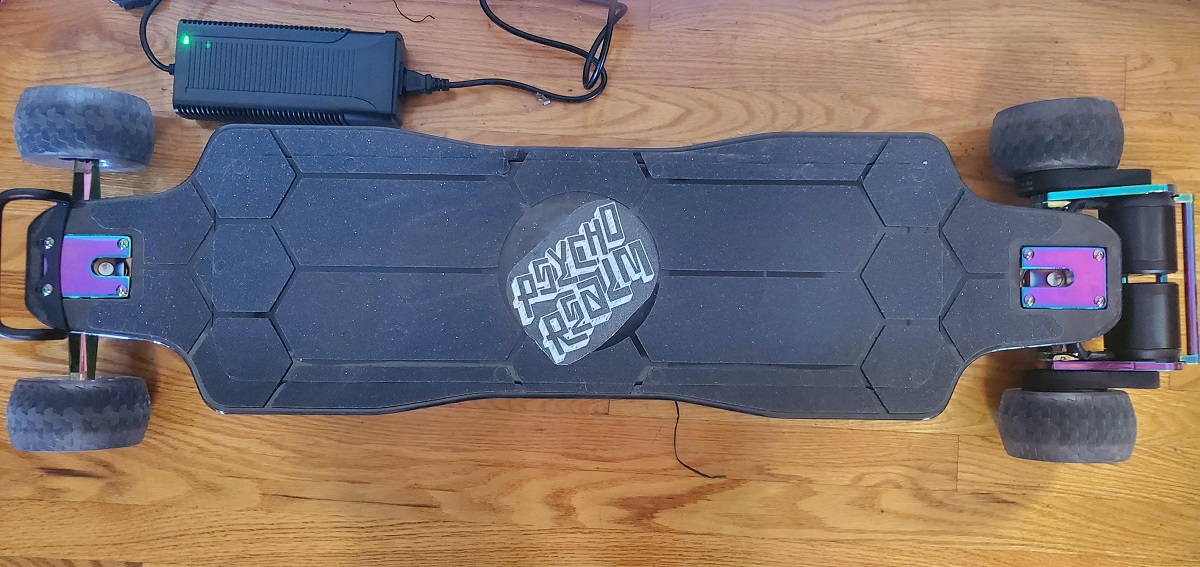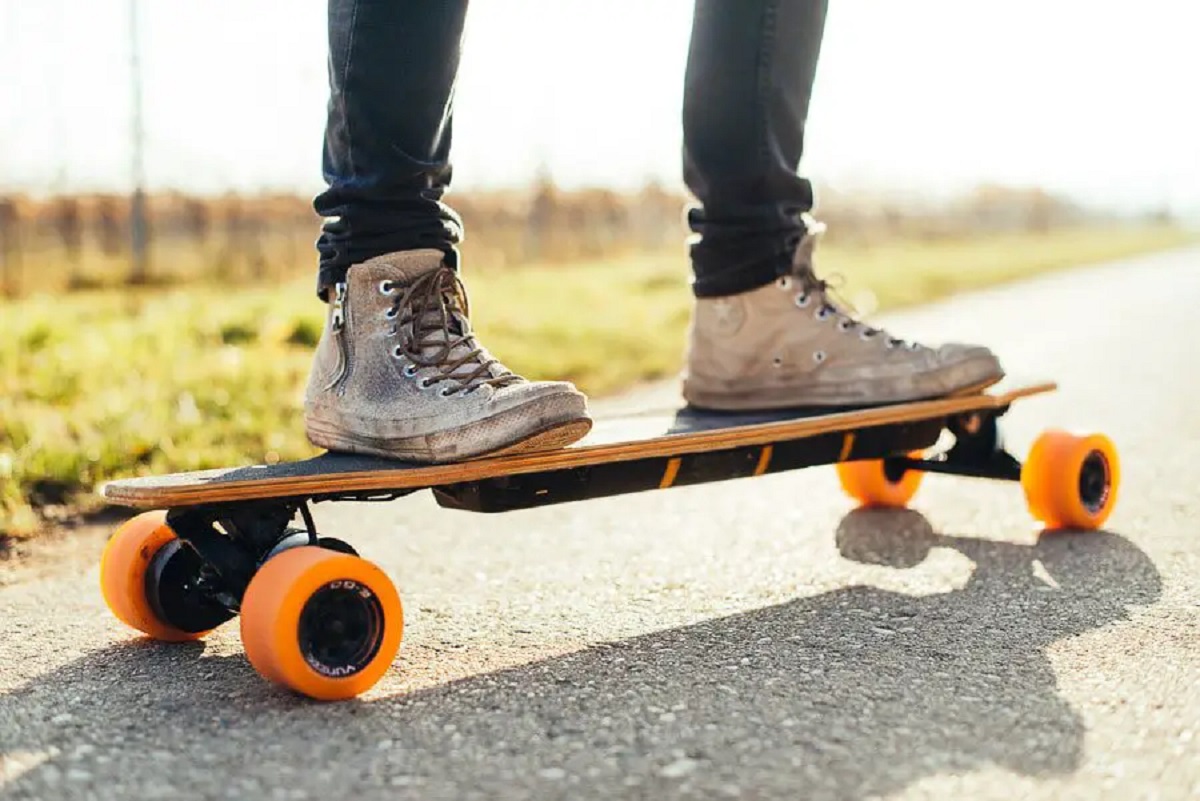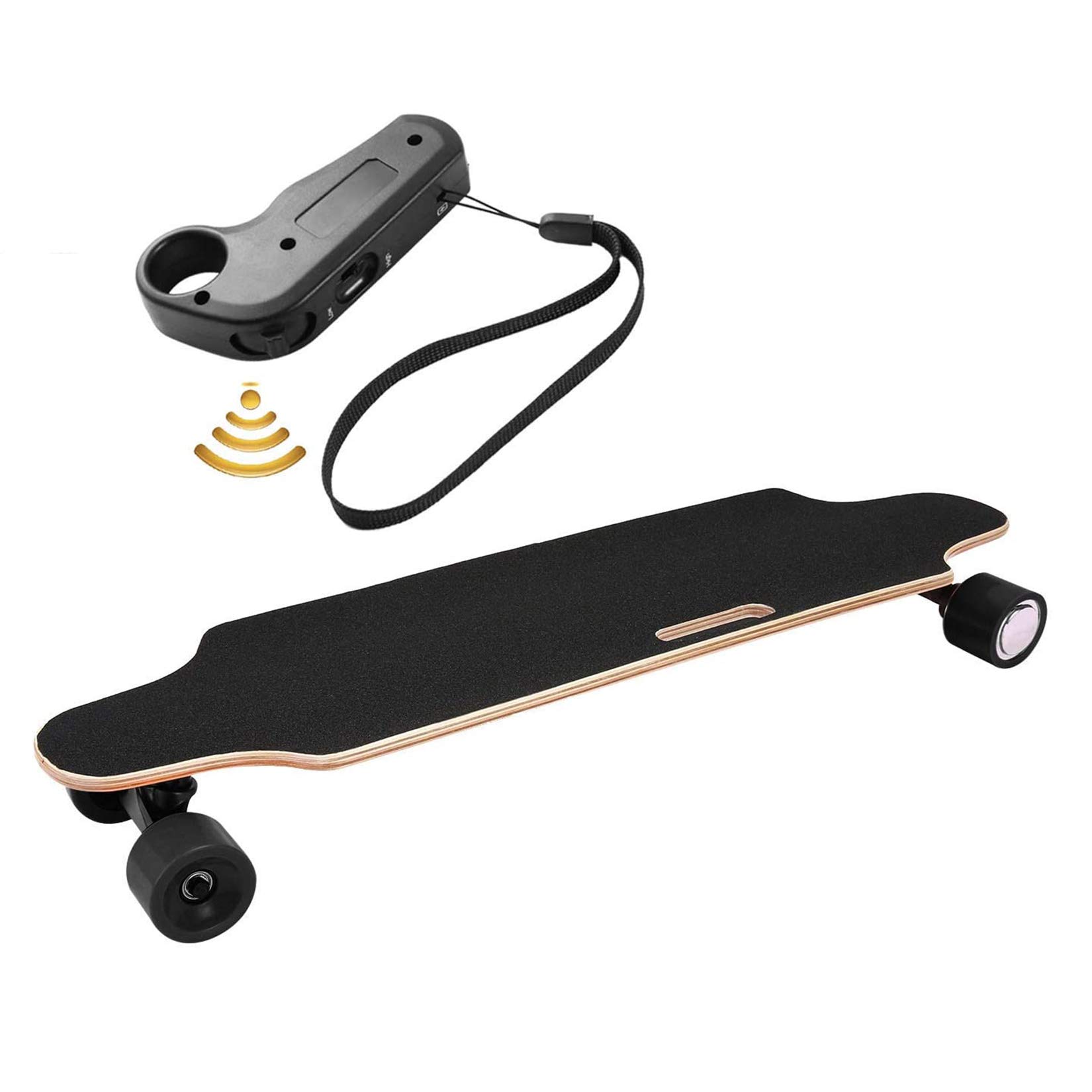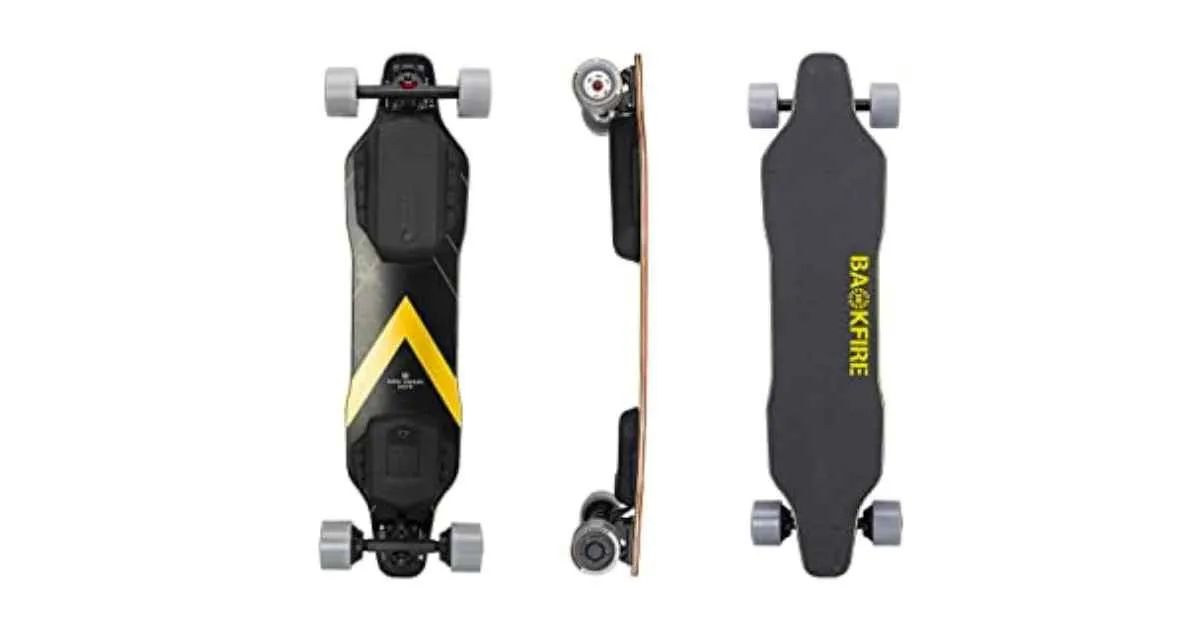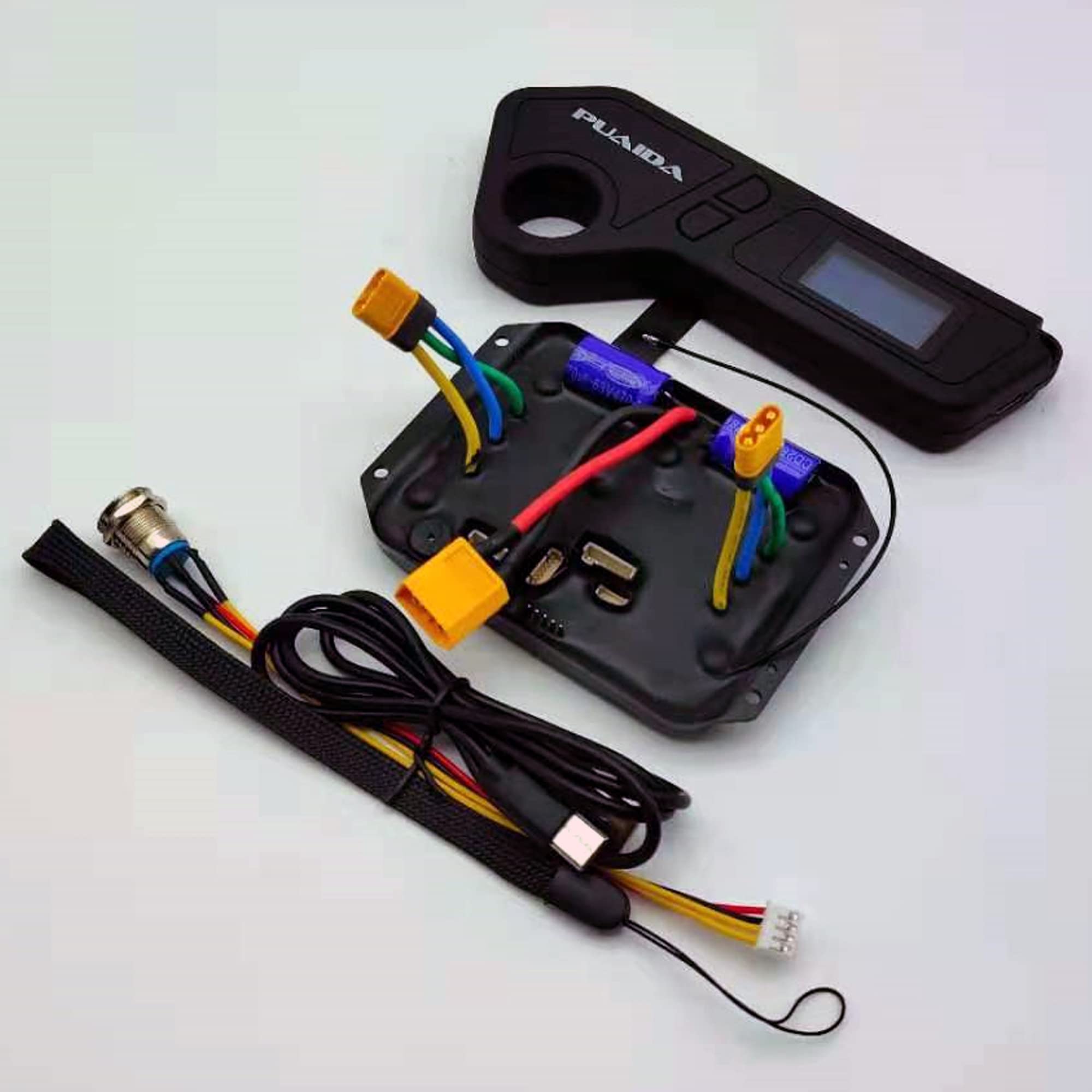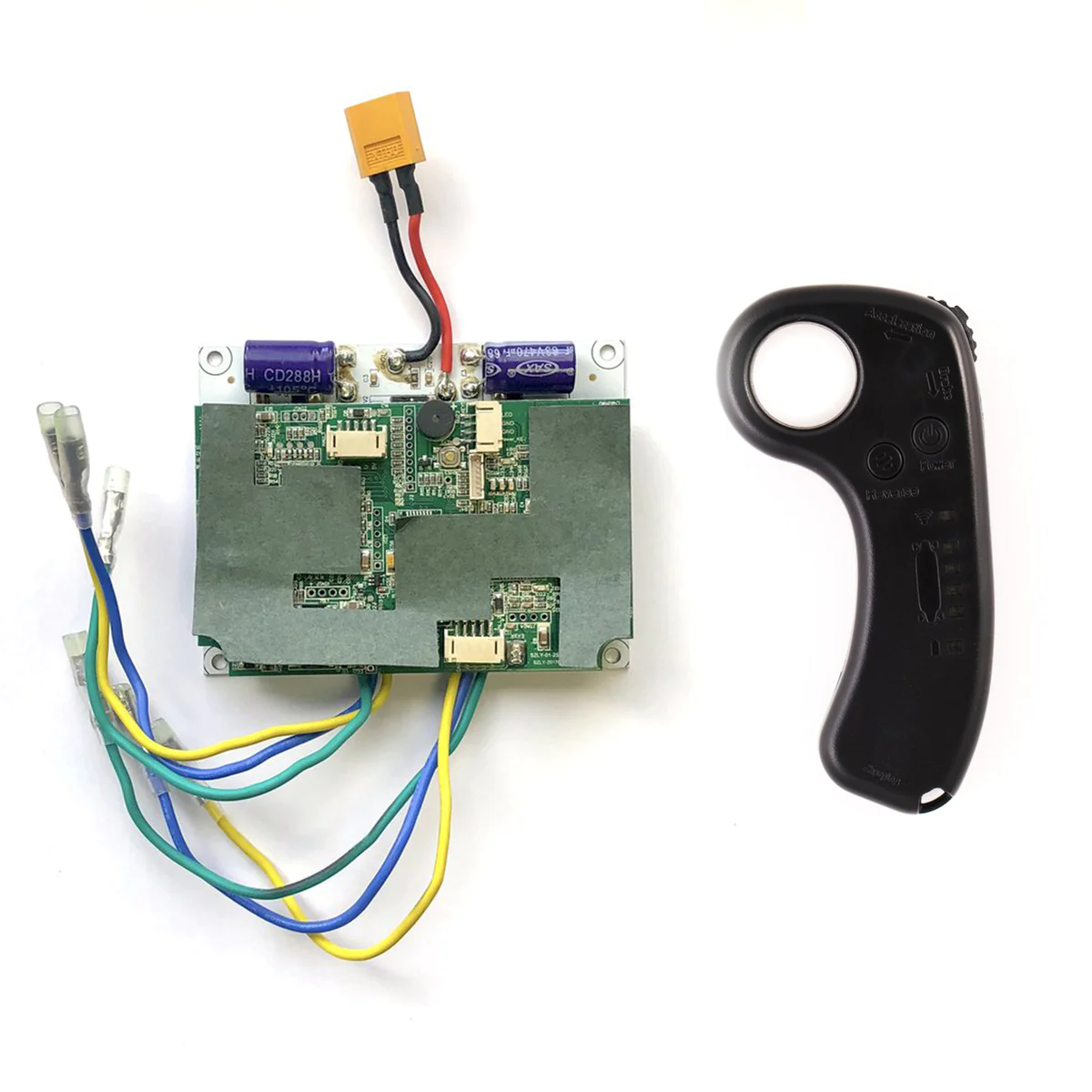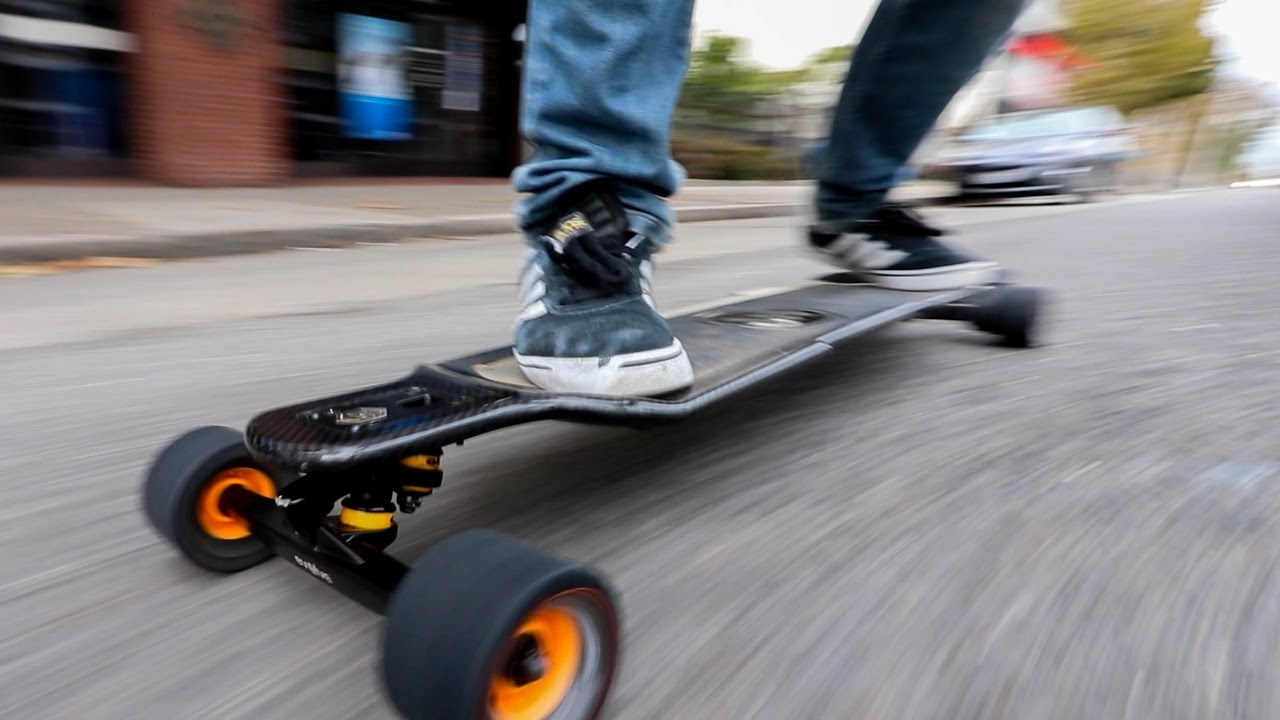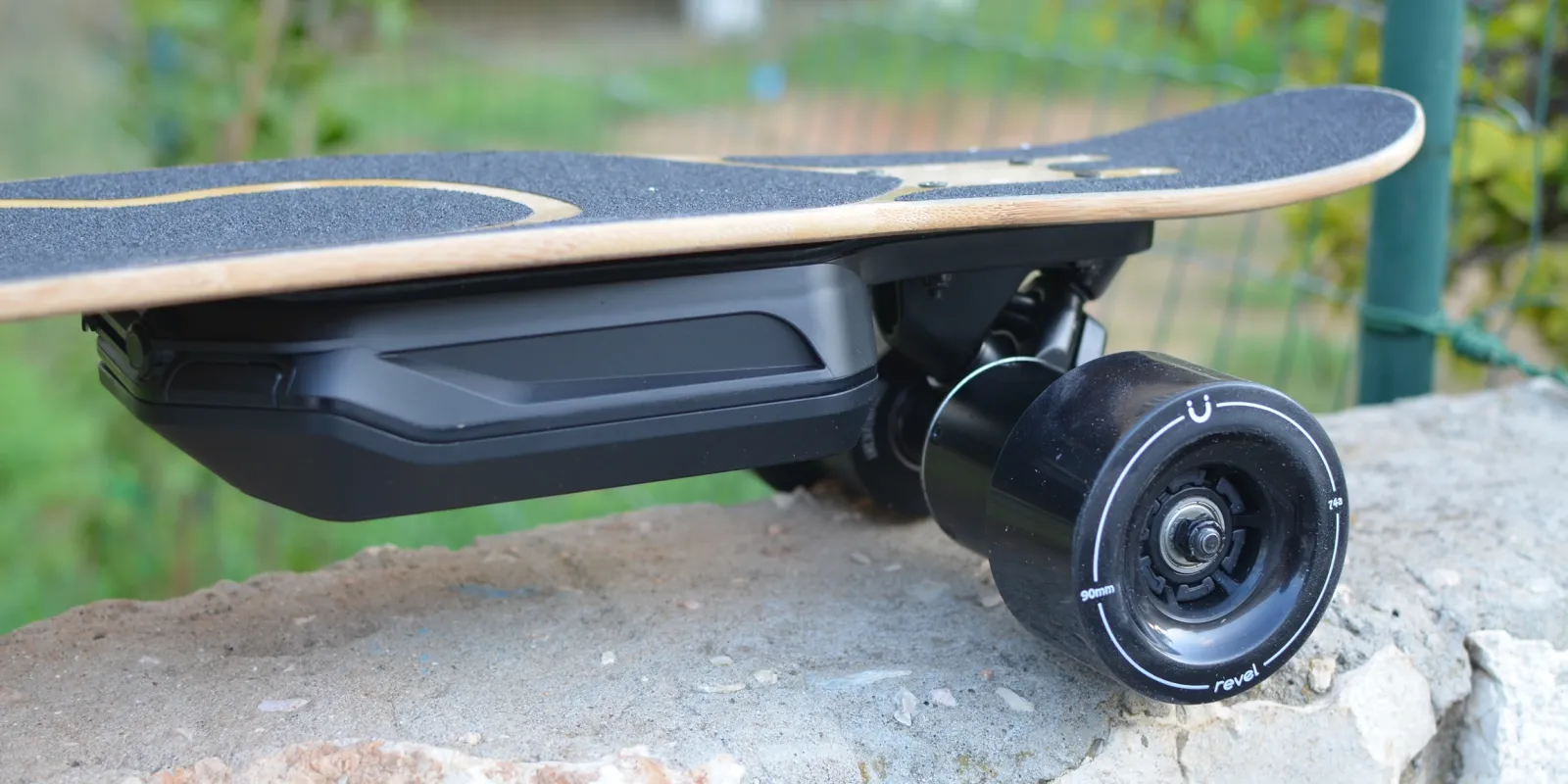Introduction
Electric skateboards have gained significant popularity in recent years as a convenient and eco-friendly mode of transportation. As electric skateboards become more advanced, it is crucial for riders to understand how to properly brake to ensure their safety and the safety of those around them.
Braking on an electric skateboard differs from traditional skateboards or longboards. With electric skateboards, riders have the ability to control their speed and come to a complete stop using various methods. Whether you are a beginner or an experienced rider, knowing the different braking techniques available to you will enhance your control over the board and ultimately provide a better riding experience.
In this article, we will explore the importance of braking on an electric skateboard and introduce you to the various braking methods you can utilize. Additionally, we will provide tips on how to maximize your braking efficiency and stay safe while riding.
Understanding how to properly brake on an electric skateboard is essential for both novice and experienced riders. It allows you to maintain control over your speed, navigate obstacles, and come to a controlled stop when needed. Failing to properly brake can lead to accidents, injuries, or damage to your electric skateboard.
Throughout this article, we will discuss different braking techniques, including using the regenerative braking feature, using a handheld remote, using your bodyweight to brake, mastering footbraking, and advanced braking techniques for experienced riders. By familiarizing yourself with these methods, you will be able to choose the most suitable technique for your riding style and enhance your overall riding experience.
So, whether you are a beginner who is just starting to explore electric skateboarding or an experienced rider looking to improve your braking skills, read on to discover the various braking techniques that can elevate your electric skateboarding experience.
Why braking is important on an electric skateboard
Braking is a critical aspect of riding an electric skateboard as it ensures the rider’s safety and allows for controlled maneuvering. Understanding why braking is important on an electric skateboard will emphasize the significance of mastering this skill.
Firstly, electric skateboards can reach high speeds, especially on flat terrain or downhill slopes. Without the ability to brake effectively, riders may struggle to slow down or come to a stop, putting themselves and others at risk. Braking provides riders with the necessary control to navigate different riding conditions and react to unexpected situations.
Another reason why braking on an electric skateboard is important is that it allows riders to maintain a comfortable speed. By properly controlling their speed, riders can adapt to various environments, such as crowded areas or narrow paths, where maintaining a slower pace is essential for safety.
Furthermore, precise braking is crucial for avoiding obstacles and potential collisions. Electric skateboards, like any other mode of transportation, encounter obstacles in their path, such as pedestrians, potholes, or debris. The ability to brake efficiently enables riders to react quickly and avoid potential accidents by reducing their speed or coming to a complete stop if necessary.
Apart from safety reasons, proper braking techniques on an electric skateboard also contribute to the longevity of the skateboard itself. Abrupt or improper braking can put excess stress on the board’s components, potentially resulting in damage or premature wear. By utilizing correct braking techniques, riders can extend the lifespan of their electric skateboard and minimize the need for repairs or replacements.
In summary, mastering the art of braking on an electric skateboard is essential for several reasons. It ensures the rider’s safety by allowing for controlled speeds and maneuvering in different environments. It also enables riders to avoid obstacles and potential collisions. Lastly, it contributes to the longevity of the electric skateboard by reducing stress on its components. By understanding the importance of braking on an electric skateboard, riders can prioritize developing this skill and enhance their overall riding experience.
Different braking methods
When it comes to braking on an electric skateboard, there are several methods to choose from, each with its own advantages and techniques. By familiarizing yourself with these different braking methods, you can select the one that suits your riding style and preferences. Let’s explore some of the most common braking methods on electric skateboards.
Regenerative braking: Many electric skateboards come equipped with regenerative braking technology. When you engage the brakes, the electric motor on the skateboard acts as a generator, converting the kinetic energy of the moving skateboard back into electrical energy. This energy is then used to recharge the battery. Regenerative braking is highly efficient and helps extend the skateboard’s battery life. It is usually controlled through a handheld remote or a specific braking mode on the skateboard itself.
Handheld remote braking: Most electric skateboards are equipped with a handheld remote that controls acceleration and braking. To brake, simply apply pressure to the brake lever on the remote. The more pressure you apply, the stronger the braking force will be. Handheld remote braking provides precise control over your speed and is often the preferred method for beginners due to its ease of use.
Bodyweight braking: Another method of braking on an electric skateboard is to shift your bodyweight backward, effectively leaning against the direction of motion. By doing so, you increase the friction between the wheels and the ground, slowing down or coming to a stop. Bodyweight braking requires good balance and core strength, as well as practice to achieve the desired braking control.
Footbraking: Footbraking is a technique commonly used by traditional skateboarders and can also be applied to electric skateboards. It involves dragging one foot on the ground while keeping the other foot on the board. To brake, place the sole of your shoe onto the ground behind the skateboard and gradually increase the pressure to slow down. Footbraking is effective for controlling speed, especially in situations where you need to make minor adjustments or maintain a consistent pace.
It’s important to experiment with these different braking methods to determine which one works best for you. Factors such as riding experience, riding conditions, and personal preference will influence your choice. Practice each braking method in a controlled environment before applying it in real-world situations, ensuring you are comfortable and confident with the technique.
By understanding and mastering these different braking methods, you will have the versatility and control to confidently brake on your electric skateboard, enhancing your riding experience and ensuring your safety on the road.
Using the regenerative braking feature
One of the most advantageous features of electric skateboards is regenerative braking technology. This innovative braking system allows riders to not only slow down or come to a stop but also capture and convert energy back into the battery, increasing the overall efficiency of the skateboard. In this section, we will explore how to effectively use the regenerative braking feature on an electric skateboard.
To engage regenerative braking, riders must activate the braking function either through a handheld remote or a specific braking mode on the skateboard itself. When the brakes are applied, the electric motor on the skateboard acts as a generator, converting kinetic energy into electrical energy. This energy is then fed back into the battery for later use.
When using the regenerative braking feature, it’s important to maintain a balance between slowing down and potentially overcharging the battery. Applying too much braking force may result in a rapid deceleration, causing the wheels to lock up and compromising stability. It’s recommended to gradually apply the brake and allow the regenerative braking system to smoothly bring the skateboard to a halt.
One of the significant advantages of regenerative braking is the extended battery life it provides. By capturing and utilizing the energy generated during braking, riders can potentially increase their ride time between charges. This not only enhances the overall efficiency of the skateboard but also reduces the frequency of recharging, allowing for longer and more enjoyable rides.
However, it’s crucial to note that regenerative braking may not be as effective on steep downhill slopes or when the battery is already fully charged. In these situations, it’s essential to rely on alternative braking methods, such as using the handheld remote or adjusting your bodyweight, to maintain control over your speed and ensure your safety.
Overall, the regenerative braking feature on electric skateboards is a valuable tool that provides several benefits. It not only allows riders to control their speed and come to a stop but also enables the capture and conversion of energy, resulting in extended battery life. By understanding how to effectively use this feature, riders can optimize their electric skateboard’s performance while enjoying an eco-friendly and efficient mode of transportation.
Braking with a handheld remote
Braking with a handheld remote is one of the most common and convenient methods for controlling the speed of an electric skateboard. The handheld remote typically comes with two levers – one for acceleration and the other for braking. In this section, we will explore how to effectively brake using a handheld remote on an electric skateboard.
To brake with a handheld remote, simply apply pressure to the brake lever. The more pressure you apply, the stronger the braking force will be. It’s important to find the right balance between slowing down and maintaining stability. Abruptly slamming on the brakes can cause the wheels to lock up and potentially result in loss of control or accidents. Gradually increase the braking force to ensure a smooth and controlled deceleration.
When using the handheld remote for braking, it’s important to be aware of your surroundings. Anticipate the need to brake in advance, especially when approaching obstacles or when riding in crowded areas. The handheld remote allows for quick and responsive braking, enabling riders to react promptly to any potential hazards.
It’s recommended to practice braking with the handheld remote in a safe environment before venturing into busier streets or more challenging terrain. Get familiar with the sensitivity of the brake lever and how it affects the overall speed reduction. Experiment with different levels of pressure and observe how the skateboard responds to find the appropriate braking force that suits your riding style and preferences.
Additionally, it’s important to regularly check and maintain the condition of your handheld remote. Ensure that the battery is fully charged to avoid any unexpected loss of control. Take the time to familiarize yourself with the layout and functionality of the remote, as different skateboard models may have variations in their remote controls.
In summary, braking with a handheld remote provides an efficient and reliable method for controlling the speed of an electric skateboard. By practicing and becoming comfortable with the sensitivity of the brake lever, riders can confidently navigate various riding conditions while maintaining control and ensuring their safety. Use the handheld remote as a tool to enhance your electric skateboarding experience and enjoy the convenience and precision it brings to your rides.
Using your bodyweight to brake
Another effective method for braking on an electric skateboard is using your bodyweight. This technique involves shifting your body backward to create friction between the wheels and the ground, allowing you to slow down or come to a stop. In this section, we will explore how to use your bodyweight effectively to brake on an electric skateboard.
To use your bodyweight to brake, start by shifting your weight backward, leaning against the direction of motion. By leaning back, you increase the contact and friction between the wheels and the ground, gradually reducing your speed. It’s important to maintain a stable and balanced position while applying this technique to ensure control and prevent falls.
When using your bodyweight to brake, it’s crucial to practice good body positioning. Keep your knees slightly bent and your center of gravity low to maintain stability. Distribute your weight evenly over your feet to maximize braking effectiveness. Avoid leaning too far back, as this can compromise balance and control. Instead, find a comfortable and natural posture that allows you to exert the right amount of pressure on the wheels.
Using your bodyweight to brake requires practice and coordination. Start by practicing in a safe and open area, gradually increasing the intensity of the braking force as you gain confidence. This technique is particularly useful when you need to make minor speed adjustments or when you prefer a more hands-free approach to braking.
However, it’s important to note that using your bodyweight alone may not be sufficient for quick or emergency stops. It is recommended to combine this technique with other braking methods, such as using the handheld remote or footbraking, for enhanced control and versatility.
Remember to be aware of your surroundings and anticipate the need to brake, especially when riding in crowded areas or unpredictable environments. By using your bodyweight effectively, you can slow down or come to a stop with control and precision, enhancing your overall riding experience.
In summary, using bodyweight as a braking method on an electric skateboard provides a hands-free and intuitive approach to controlling speed. Practice and fine-tune your technique to find the right balance between braking force and stability. Combine this method with other braking techniques for a well-rounded and versatile approach to braking on your electric skateboard.
Mastering footbraking
Footbraking is a classic technique used by skateboarders and can also be applied to electric skateboards. It involves using your foot to create friction against the ground to slow down or come to a complete stop. In this section, we will explore how to master footbraking as a reliable and effective method of braking on an electric skateboard.
To perform a footbrake, start by shifting your back foot off the skateboard deck and bringing it close to the ground. Position your foot behind the skateboard, with the sole of your shoe making contact with the ground. Gradually apply pressure with your foot to create friction and control your speed. The more pressure you apply, the stronger the braking force will be.
Timing is crucial when footbraking. Start braking in advance, allowing yourself enough space to slow down gradually. Try to avoid sudden or abrupt footbrakes, as they can result in loss of balance or even falls. Instead, focus on maintaining a smooth and controlled deceleration.
When footbraking, it’s important to distribute your weight evenly over both feet to maintain balance. Keep your knees slightly bent, providing flexibility and stability. Maintain a forward posture and focus your gaze ahead to anticipate any obstacles or changes in the riding environment.
Footbraking can be especially useful when you need to make minor speed adjustments or gradually decrease your speed while maintaining control. It can also be combined with other braking methods, such as the handheld remote or regenerative braking, to maximize your braking options and adapt to various riding situations.
It’s essential to practice footbraking in a safe and controlled environment, gradually increasing your confidence and mastering the technique. Start with low speeds and smooth surfaces, progressively challenging yourself with different terrains and riding conditions.
Remember to wear appropriate protective gear while practicing footbraking or any other braking techniques. This includes a helmet, knee pads, elbow pads, and wrist guards. Safety should always be a priority when riding an electric skateboard.
In summary, mastering footbraking as a braking technique on an electric skateboard provides riders with an additional level of control and maneuverability. By practicing and perfecting this technique, you can confidently navigate various riding situations and make precise speed adjustments. Use footbraking in conjunction with other braking methods for a well-rounded approach to braking on your electric skateboard.
Advanced braking techniques for experienced riders
For experienced riders looking to take their braking skills to the next level, there are advanced braking techniques that can enhance control and precision on an electric skateboard. These techniques require practice, balance, and a deep understanding of your skateboard’s capabilities. In this section, we will explore some advanced braking techniques for experienced riders.
Carving: Carving is a technique where riders use a zigzag motion to decrease speed gradually. By shifting your weight from side to side while making wide turns, you can effectively slow down without relying solely on braking mechanisms. Carving utilizes the friction generated during the turns and allows for a smooth decrease in speed, ideal for maintaining flow and control while riding downhill.
Power slides: Power slides are advanced braking techniques that require riders to break traction deliberately and slide the wheels sideways. This technique is typically used at higher speeds to quickly reduce speed and come to a controlled stop. To execute a power slide, riders initiate a controlled drift by shifting their weight and leveraging the sideways motion to create friction against the ground.
Slide braking: Slide braking combines footbraking with a sliding motion to increase braking effectiveness. This technique involves shifting your weight to the back foot, gently pressing the foot against the ground, and then allowing the back wheels to slide sideways while applying pressure. Slide braking is particularly useful for riders who prefer a more aggressive and effective braking technique, as it maximizes the friction and reduces skidding.
It’s important to note that advanced braking techniques require experience, proper board control, and confidence in your skills. These techniques should be practiced in a controlled environment with ample space and minimal traffic. It’s recommended that riders have a good understanding of their electric skateboard’s capabilities and limitations before attempting advanced braking techniques.
It’s also crucial to wear appropriate protective gear, such as a helmet, elbow pads, knee pads, and wrist guards when practicing and executing advanced braking techniques. Safety should always be a top priority to minimize the risk of injuries or accidents.
By incorporating advanced braking techniques into your riding repertoire, you can have greater control, improved speed management, and the ability to handle various riding situations with finesse. Remember to practice these techniques gradually, push your limits gradually, and always prioritize safety while enjoying the thrill of electric skateboarding.
Safety tips while braking
Braking is a fundamental aspect of riding an electric skateboard, and ensuring safety during the braking process is paramount. By following these safety tips, you can enhance your braking experience and reduce the risk of accidents or injuries while riding your electric skateboard.
Maintain control and stability: When braking, it’s crucial to maintain control and stability over your electric skateboard. Avoid abruptly slamming on the brakes, as it can lead to loss of traction or loss of balance. Gradually apply braking force to achieve a smooth and controlled deceleration, allowing you to maintain stability and react to unexpected obstacles or changes in the riding environment.
Be aware of your surroundings: Always be mindful of your surroundings while braking. Anticipate the need to brake in advance, especially when approaching intersections, pedestrians, or other vehicles. Be cautious of potential hazards in your path and adjust your braking technique accordingly. Stay alert and use your peripheral vision to continuously scan for any potential dangers.
Practice emergency stops: It’s important to practice emergency stops to prepare for unexpected situations. Regularly practice bringing your electric skateboard to a sudden stop from various speeds. This will help you familiarize yourself with the braking distance required at different speeds and improve your reaction time in case of emergencies.
Choose appropriate braking methods for different situations: Different riding conditions may require different braking methods. Understand the strengths and limitations of each braking technique and select the most suitable one for the specific situation. For example, use regenerative braking or handheld remote braking on flat terrain, while footbraking or bodyweight braking may be more effective on downhill slopes or crowded areas.
Wear proper protective gear: Always wear appropriate protective gear when riding your electric skateboard, especially when braking. This includes a helmet, knee pads, elbow pads, and wrist guards. These safety accessories can minimize the risk of injuries during unexpected stops or falls and provide added confidence while riding and braking.
Regularly maintain your electric skateboard: Regular maintenance of your electric skateboard is essential to ensure optimal braking performance. Keep your wheels clean and free from debris to maintain proper traction. Check the condition of your brakes, whether they are regenerative or mechanical, and make any necessary adjustments or replacements. Regularly inspect your skateboard’s components, such as the remote control, battery, and motor, to ensure proper functioning, as any malfunctions can affect braking performance.
By following these safety tips while braking, you can minimize the risk of accidents and ensure a safe and enjoyable riding experience on your electric skateboard. Remember to prioritize safety at all times and be proactive in practicing and improving your braking skills to become a confident and responsible rider.
Conclusion
Braking is a vital skill that every electric skateboard rider should master. It ensures the rider’s safety, allows for controlled speed adjustments, and enhances overall maneuverability. In this article, we explored the importance of braking on an electric skateboard and discussed various braking methods, including regenerative braking, handheld remote braking, bodyweight braking, and footbraking. We also highlighted advanced braking techniques for experienced riders and provided safety tips to ensure a secure and enjoyable riding experience.
By understanding and practicing these different braking techniques, riders can confidently control their speed, navigate various riding conditions, and react promptly to potential hazards. It is crucial to choose the appropriate braking method for each situation, as well as to wear proper protective gear and regularly maintain your electric skateboard to optimize performance and safety.
Remember, mastering braking techniques takes practice and experience. Start by mastering the basics and gradually work your way up to more advanced techniques. Be patient with yourself and give yourself time to develop your skills.
Ultimately, the ability to effectively brake on an electric skateboard is a crucial aspect of becoming a skilled and responsible rider. So, whether you are a beginner just starting your electric skateboarding journey or an experienced rider looking to enhance your braking skills, take the time to practice and perfect your technique. By doing so, you will enjoy a safer, more controlled, and thrilling electric skateboarding experience.







